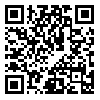Volume 1, Issue 4 (2021)
jpt 2021, 1(4): 265-285 |
Back to browse issues page
Download citation:
BibTeX | RIS | EndNote | Medlars | ProCite | Reference Manager | RefWorks
Send citation to:



BibTeX | RIS | EndNote | Medlars | ProCite | Reference Manager | RefWorks
Send citation to:
Toossi Saeidi M, Hosseini S. Explaining the Ontological Differences between Islamic Transcendent Philosophy and Emergentism on the Soul-Body Problem. jpt 2021; 1 (4) :265-285
URL: http://jpt.modares.ac.ir/article-34-57761-en.html
URL: http://jpt.modares.ac.ir/article-34-57761-en.html
1- Philosophy of Science Department, Sharif University of Technology, Tehran, Iran , masoud.toossi@staff.sharif.edu
2- Philosophy of Science Department, Sharif University of Technology, Tehran, Iran
2- Philosophy of Science Department, Sharif University of Technology, Tehran, Iran
Abstract: (1259 Views)
Emergentism bears similarities to the Islamic Transcendent Philosophy about the relationship between the soul and the body. At the same time, despite these similarities, there seem to be fundamental differences in the ontological picture of these two. The main issue of this paper is to identify these differences. The result of this effort can be summarized as saying that the ontological foundations of Emergentism are consistent with scientific findings, while this is not the case with Transcendent Philosophy, and that there are fundamental differences between the ontological picture of Transcendent Philosophy and Emergentism in relation to the soul and the body relation; Differences rooted in the contradiction between the classical or Aristotelian image of the world and the new scientific image of the that.
Keywords: Emergentism , Islamic Transcendent Philosophy , Soul-Body Problem , Matter-Form Dualism , Causation
Article Type: Original Research |
Subject:
Philosophy of Religion (Analytical)
Received: 2021/12/10 | Accepted: 2021/12/27 | Published: 2022/01/27
Received: 2021/12/10 | Accepted: 2021/12/27 | Published: 2022/01/27
Send email to the article author
| Rights and permissions | |
 |
This work is licensed under a Creative Commons Attribution-NonCommercial 4.0 International License. |







